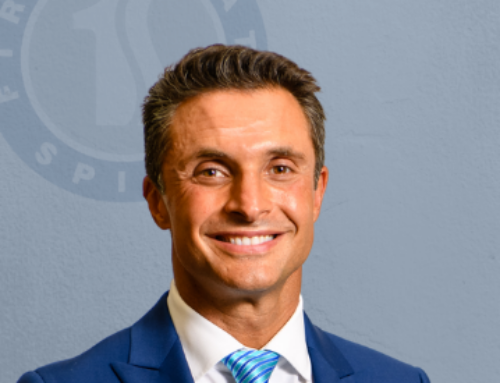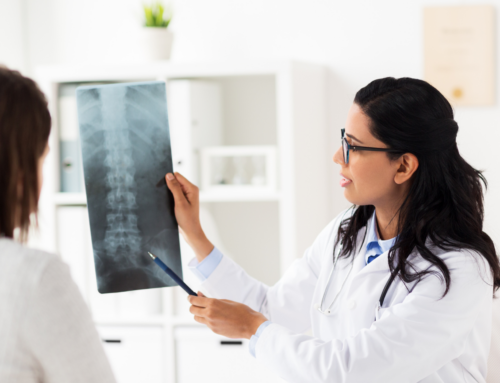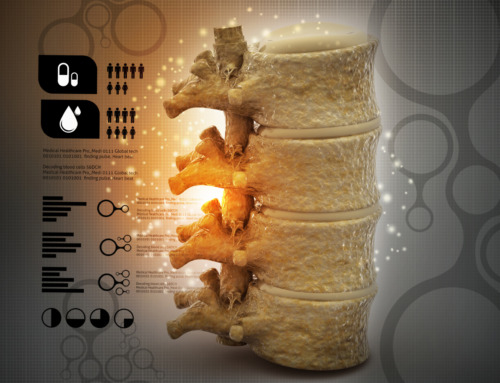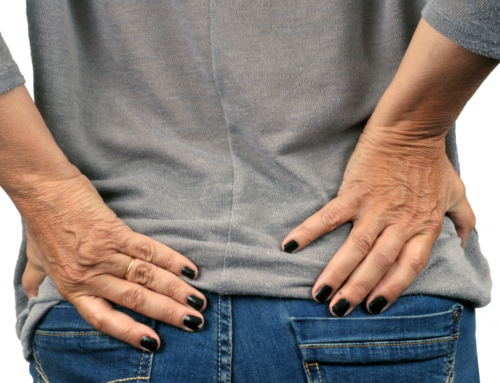Spinal discs act as the cushioning between the individual vertebrae in the spine. They consist of cartilage – soft on the inside with an outer layer of tough cartilage. There are 23 vertebral discs in the back that have three prominent roles: act as a shock absorber, allow spinal mobility, and hold the vertebrae together.
The discs are primarily water at birth, and as you age, they dehydrate and degenerate. Because of this, the joints tend to become stiff. These normal and unpreventable changes in the spine can cause pain and abnormalities in the discs and their physical structure.
The terms “bulging disc” and “herniated disc” are likely familiar. They are both common in patients who suffer from back pain, but are very different conditions.
What is a Bulging Disc?
A bulging disc happens when the disc becomes dehydrated, and its width gets bigger. Think of a tire going flat and sides buldging out. The outer layer of tough cartilage is affected.
Age-related conditions, a history of trauma, and other degenerative issues can be the root cause of bulging discs. Due to its degenerative nature, the symptoms can take a long time to appear. The pain can radiate down the buttocks, upper legs, and most commonly, the back. A bulging disc does not typically cause compression on the spinal nerves.
There are many available treatment options, depending on your pain and the number of discs that are affected.
- Short-term treatments include anti-inflammatory medications & steroid injections.
- Long term nonsurgical treatments tend to include an exercise program or Orthobiologic treatments
- Surgical treatments can include lumbar decompression and fusion.
What is a Herniated Disc?
Herniated discs are also referred to as ruptured or slipped discs and are typically much more painful than bulging discs. This is because herniated discs occur when a crack in the outer cartilage exposes the inner, soft layer of cartilage. Soft cartilage can excrete through the cracked outer layer and reach nerve roots, causing severe pain.
Herniated discs are frequently caused by acute injuries or strain on the back. This could be due to movements like twisting, lifting heavy objects, or in some cases, obesity. The added weight and stress on the spine can cause ruptures.
Herniated discs may be prevented by keeping proper body weight, doing core-strengthening exercises, and maintaining good posture while sitting and standing.
There are a variety of treatment options:
- Over-the-counter medications used to treat mild to moderate pain.
- Cortisone injections suppress inflammation around the nerve area.
- Physical therapy improves posture and teaches exercises designed to minimize specific types of pain.
- Surgery: If more conservative treatments fail, and you experience pain, weakness, numbness, loss of bladder control, or difficulty standing, surgery might be best suitable for you.
Disc bulges or herniations can usually be treated without surgery. As technology advances, there are more non-surgical options for the treatment of disc pathology.
The team at First State Spine is available to answer any questions about herniated and bulging discs and to discuss possible treatments. Fill out the form below to get in touch today.






